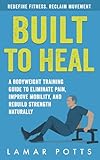Gluteal tendinopathy is a condition that results in pain and discomfort in the gluteal muscles due to overuse, injury, or degeneration of the tendons.
Gluteal Tendinopathy pain often becomes more pronounced with activities such as walking, climbing stairs, or prolonged sitting.
Finding effective pain relief is crucial to managing the Gluteal Tendinopathy condition, reducing discomfort, and improving quality of life.
In this article, we will explore the ten best pain relief options for gluteal tendinopathy, focusing on their benefits, potential drawbacks, and how they can help alleviate symptoms to help you decide which treatment best suits your needs.
Also Check: Best Shoes For Gluteal Tendinopathy
What Is The Best Pain Relief For Gluteal Tendinopathy? 10 Effective Solutions And Remedies
1. Physical Therapy
Physical therapy is one of the most effective ways to treat gluteal tendinopathy. A trained physical therapist can design a personalized exercise program to strengthen the gluteal muscles and improve flexibility, which helps alleviate pain. The therapist may also use manual therapy techniques to reduce tension in the tendons and surrounding muscles.
Physical therapy can help you manage the pain long-term by addressing the underlying causes of the condition. With consistent effort, it can significantly reduce discomfort, improve mobility, and prevent the recurrence of tendinopathy. It’s often considered a first-line treatment due to its non-invasive nature and effectiveness.
Pros:
- Targeted exercises
- Long-term relief
- Customizable treatment
- Improves mobility
- Non-invasive approach
- Strengthens muscles
- Prevents recurrence
Cons:
- Requires time commitment
- Progress can be slow
- Might be costly
2. Ice Therapy
Ice therapy, or cryotherapy, is a simple and effective way to reduce inflammation and numb pain in the gluteal region. By applying an ice pack to the affected area, the blood vessels constrict, helping to decrease swelling and dull the pain. This method is especially useful during the acute phase of tendinopathy.
While ice therapy can provide quick relief from acute pain, it should be combined with other treatments for long-term results. Applying ice for 15 to 20 minutes, several times a day, can help control inflammation. It’s a low-cost and accessible option for those seeking immediate pain management.
Pros:
- Reduces inflammation
- Provides quick relief
- Easy to apply
- Low cost
- Non-invasive
- Readily accessible
- Ideal for acute pain
Cons:
- Temporary relief
- May cause discomfort
- Not a long-term solution
3. Anti-Inflammatory Medications
Nonsteroidal anti-inflammatory drugs (NSAIDs) such as ibuprofen or naproxen can help reduce pain and inflammation associated with gluteal tendinopathy. These medications work by blocking the enzymes that cause inflammation, offering quick relief from pain. They can be taken orally or applied topically.
NSAIDs are effective for controlling pain in the short term, especially during flare-ups. However, prolonged use of NSAIDs should be avoided due to potential side effects, such as stomach ulcers and kidney damage. It’s important to use these medications under the guidance of a healthcare provider to minimize risks.
Pros:
- Fast-acting relief
- Reduces swelling
- Readily available
- Available over-the-counter
- Non-invasive
- Widely used
- Effective for flare-ups
Cons:
- Short-term solution
- Potential side effects
- May cause dependence
4. Corticosteroid Injections
Corticosteroid injections are powerful anti-inflammatory medications that can be injected directly into the painful tendons. These injections provide strong pain relief by reducing inflammation and swelling at the site of injury. They are often recommended when other treatments have not been effective.
While corticosteroid injections provide quick pain relief, they are not a long-term solution. Overuse of these injections can lead to tendon weakening, so they should only be used sparingly. They can be an effective option for people experiencing severe pain or those with chronic tendinopathy.
Pros:
- Strong pain relief
- Rapid effect
- Reduces inflammation
- Helps with severe pain
- Minimally invasive
- Quick recovery
- Effective for flare-ups
Cons:
- Temporary relief
- Risk of tendon damage
- Requires professional administration
5. Massage Therapy
Massage therapy helps relax tight muscles, reduce muscle spasms, and improve circulation, all of which can alleviate the pain associated with gluteal tendinopathy. Techniques such as deep tissue massage or myofascial release can be particularly helpful in reducing tension in the gluteal muscles and surrounding areas. Regular massages may help keep pain at bay.
Massage therapy can complement other treatments, providing relaxation and pain relief, but it is typically not a standalone solution for managing tendinopathy. It can help reduce stress and muscle tightness, improving overall mobility. For best results, massage therapy should be combined with physical therapy or other treatments.
Pros:
- Reduces muscle tension
- Improves circulation
- Relieves stress
- Non-invasive
- Provides relaxation
- Easy to access
- Enhances flexibility
Cons:
- Temporary relief
- Requires regular sessions
- Can be expensive
6. Ultrasound Therapy
Ultrasound therapy uses sound waves to promote healing by increasing blood flow to the injured tendon. It can help reduce pain, inflammation, and muscle stiffness by stimulating tissue repair. This non-invasive treatment is typically administered by a trained therapist.
Ultrasound therapy can complement other treatments like physical therapy and ice therapy, enhancing their effectiveness. However, it may not be suitable for everyone, particularly those with certain medical conditions. For best results, ultrasound therapy should be combined with other forms of rehabilitation.
Pros:
- Promotes healing
- Non-invasive
- Reduces stiffness
- Enhances circulation
- Effective for tendon injuries
- Improves mobility
- Safe when used correctly
Cons:
- Requires professional administration
- Can be expensive
- Not suitable for all
7. Stretching and Strengthening Exercises
Specific stretching and strengthening exercises for the gluteal muscles can help reduce pain and improve tendon function. Strengthening exercises focus on improving muscle support around the tendon, while stretching can improve flexibility and reduce tension. These exercises can be performed at home or under the supervision of a physical therapist.
When done regularly, stretching and strengthening exercises can help prevent the recurrence of tendinopathy. They may take some time to show results, but consistency is key. This treatment option is safe, cost-effective, and offers long-term benefits.
Pros:
- Improves muscle strength
- Enhances flexibility
- Prevents recurrence
- Non-invasive
- Cost-effective
- Long-term benefits
- Can be done at home
Cons:
- Requires consistency
- Progress may be slow
- Needs proper guidance
8. Platelet-Rich Plasma (PRP) Therapy
PRP therapy involves injecting a concentrated solution of the patient’s own platelets into the injured tendon to promote healing. The platelets contain growth factors that stimulate tissue regeneration and repair. PRP therapy is becoming increasingly popular for treating tendinopathies, including gluteal tendinopathy.
PRP therapy can speed up the healing process and reduce pain, but it may not work for everyone. It requires multiple injections, and the process can be expensive. Despite the costs, many patients find the benefits to be worth it due to the potential for long-term pain relief.
Pros:
- Accelerates healing
- Stimulates tissue repair
- Minimal risk of rejection
- Long-term pain relief
- Non-invasive
- Personalized treatment
- Can prevent surgery
Cons:
- Expensive
- Requires multiple sessions
- Not guaranteed to work
9. Heat Therapy
Heat therapy can be an effective way to relax tight muscles and reduce pain in the gluteal area. Applying a warm compress or heating pad can increase blood flow and promote healing by loosening up stiff muscles. This treatment is particularly helpful for chronic tendinopathy and after physical activity.
While heat therapy offers comfort and pain relief, it should not be used during the acute phase of inflammation, as it can exacerbate swelling. It’s best used in conjunction with other treatments to manage symptoms over time. Heat therapy is easily accessible and can be done at home.
Pros:
- Relaxes muscles
- Improves circulation
- Easy to use
- Non-invasive
- Inexpensive
- Safe for chronic pain
- Comforting effect
Cons:
- Not for acute pain
- Temporary relief
- Can cause burns
10. Surgery (Last Resort)
Surgical intervention is usually considered a last resort for treating gluteal tendinopathy when other treatments have failed. Surgery may involve tendon repair or release, depending on the severity of the condition. This option is typically recommended for individuals who have severe pain that does not respond to conservative treatments.
While surgery can provide long-term relief, it comes with risks such as infection, scarring, and long recovery times. It’s important to exhaust all other treatment options before opting for surgery. Post-surgery rehabilitation is essential for achieving the best outcome.
Pros:
- Long-term relief
- Effective for severe cases
- Can improve function
- Addresses underlying issues
- May prevent future pain
- Restores tendon health
- Reduces dependency on medication
Cons:
- High risk
- Expensive
- Requires lengthy recovery
Best Pain Relief For Gluteal Tendinopathy FAQs
1. What causes gluteal tendinopathy? Gluteal tendinopathy is often caused by repetitive stress, overuse, or trauma to the gluteal tendons. Poor biomechanics, muscle imbalances, and aging can also contribute to the condition.
2. Can physical therapy help with gluteal tendinopathy? Yes, physical therapy is one of the most effective treatments for gluteal tendinopathy. Targeted exercises help strengthen the glutes and reduce pain.
3. Are corticosteroid injections effective for gluteal tendinopathy? Corticosteroid injections can provide fast pain relief, but they are typically a short-term solution. Long-term use may weaken the tendon.
4. Is surgery necessary for gluteal tendinopathy? Surgery is usually considered a last resort for severe cases that do not respond to other treatments. It comes with risks and requires significant recovery time.
5. How can I prevent gluteal tendinopathy? Maintaining strong gluteal muscles, avoiding overuse, and practicing good posture can help prevent gluteal tendinopathy.
6. What is PRP therapy, and does it work? PRP therapy uses your own blood platelets to promote healing. It can be effective, but results vary from person to person.
7. How long does recovery from gluteal tendinopathy take? Recovery time varies depending on the severity of the condition and the chosen treatment. It can range from a few weeks to several months.
Conclusion:
There are numerous pain relief options available for managing gluteal tendinopathy, each with its own set of benefits and limitations.
From non-invasive treatments like physical therapy and ice therapy to more advanced options like PRP therapy and surgery, the right approach depends on the severity of your condition.
Always consult with a healthcare professional to determine the most suitable treatment for your needs.
Start your journey to recovery today by exploring these options and taking proactive steps toward healing. If you’re experiencing gluteal tendinopathy, don’t wait—take action and consult a specialist to find the best solution for you!
